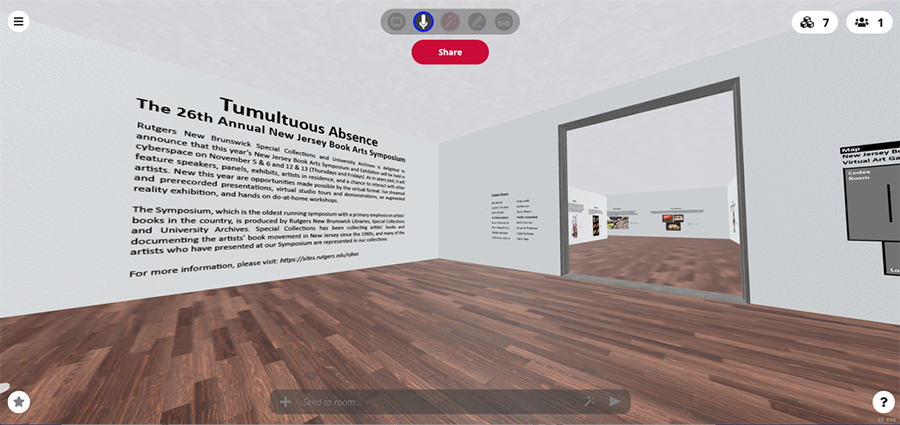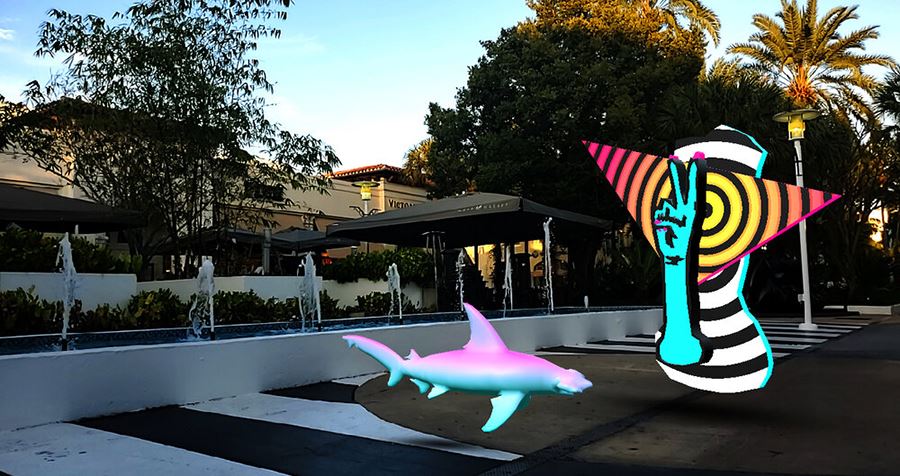Most of our collective lives for the past year and a half have been filtered through pixels, but even before the major cultural pivot toward digital spaces that was made necessary by the pandemic, the digital age has been in full swing for a while now and artists have been finding it more important to consider the ways our tactile, dimensional, and time-based artist books are experienced virtually.
Artist books often require the maker to plan the entire project before even purchasing materials to begin making. If I haven’t decided on the binding or printing processes, I won’t know how much paper I need, what size sheets to purchase, etc. So, in that initial planning stage, is it also necessary to take into consideration the way the book will be virtually experienced and allow those considerations to change our projects?
It’s easy to see how websites and a social media presence are beneficial for artists, but an inevitable product is how the digital space can affect the art that is created. If algorithms boost bold, edgy, graphic images and your subtle, gentle, hard-to-photograph artist book doesn’t get high engagement, it may feel like a less successful project. Consciously or unconsciously, the artistic trends of today are coded by social media. Making an effort to embrace or ignore that influence is worth thinking about.

Image courtesy of Beth Sheehan and Small Editions
I believe that the idea or concept behind the artist book should dictate the materials, processes, and viewer’s experience of the book and in the same way, I think the intended experience should dictate the digital translation the project receives. If every artist book is documented as if it were a codex, the viewer is robbed and if every artist book is made so that it is easy to document, the viewer is robbed. Finding a balance that works for your art practice is important.
Even if you have not considered the way your artist book will be experienced virtually at the start of your project, documenting the finished book to accurately reflect the work is incredibly important given how much of the global audience will not see the work in person. Artist books are usually 3-dimensional, intimate, and time-based but standard photographing can flatten the work. Along with the usual considerations such as proper lighting, a quality background, image size and quality, color correction, and documenting multiple angles, you may also want to consider the following. Taking photographs of the book being handled gives the viewer an idea of scale as well as demonstrating the way the viewer should interact with the book. Photographing each page from the same angle to create a gif or slideshow can be helpful for instances where videos are not possible. You may also want to consider creating multiple short video clips that serve various purposes such as an instructional video about displaying the book, a “product” video that showcases the features, a behind-the-scenes process video, and an experience video that acts as the viewer handling the book themselves.

Image courtesy of the Quarantine Public Library
Additionally, there is a lot to be said for creating artist books that will live exclusively in a digital space and quite a lot of artists are producing projects that fully consider their virtual existence. Not only does a digital experience of an artist book make it more accessible but considering the benefits of digital media can push the world of artist books so much further. The Quarantine Public Library has made it a priority to provide access to artist books, as well as providing an avenue to begin or build your art collection. They are a virtual library containing one-page artist books for patrons to print, fold, and read at home for free. Bringing artist books to those that may not get the chance to see them otherwise spreads creativity and boosts the book arts community.

Image courtesy of the New Jersey Book Arts Symposium
The digital era has changed book arts in more direct ways as well. Book artists have been integrating digital elements into physical artworks, creating virtual exhibitions such as the exhibition titled Tumultuous Absence (pictured above) during the NJ Book Arts Symposium and pushing the definition of “artist books” through digital technologies. The worlds of virtual reality and augmented reality are spreading through the art world as well. One of the most exciting examples is an app called Tropi created by the non-profit Interactive Initiative. The app uses augmented reality to bring South Florida artists’ works to life, allowing viewers to physically walk up to and around the artworks that they are seeing through their phone. Imagine walking through one of your artist books!

Image courtesy of Interactive Initiative
Beth Sheehan is an artist currently living in Tuscaloosa, AL. She teaches paper, print, and book workshops around the US and virtually. She co-authored the book Bookforms. Sheehan has also worked as a professional printer at Durham Press and Harlan and Weaver and was the Bindery Manager at Small Editions.

